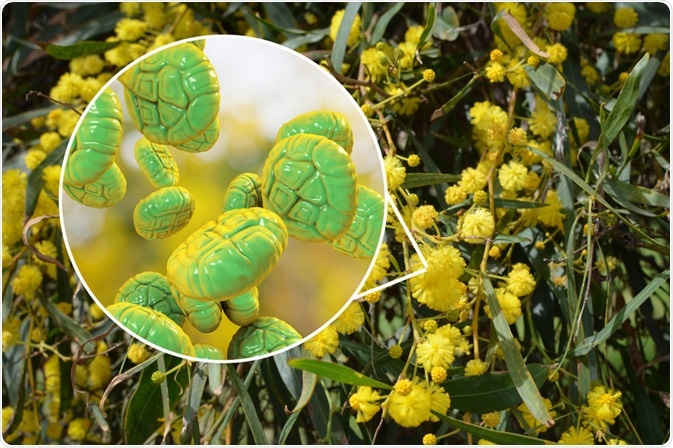Allergen Detection Using LC-MS

Allergens are defined as any substances that can cause an allergic reaction. Allergens can be extremely dangerous, so being able to detect them in various substances is very important. Liquid chromatography-mass spectrometry is one method that has gained a lot of popularity over the past decade for the detection of allergens.
 Kateryna Kon | Shutterstock
Kateryna Kon | Shutterstock
What are allergens?
Allergies are caused by an inappropriate immune response to otherwise harmless substances which are known as allergens. In short, individuals become hypersensitive to a particular antigen, and when exposed to the substance, respond with overproduction of the antibody, most notably immunoglobulin E.
Allergen detection is, therefore, essential in the food industry where allergens must be outlined on the label. It is also important in the medical industry, primarily to prevent medical staff from administering drugs to a person who is hypersensitive (such allergies may be seen with penicillin and many other medications). In both cases, the detection of allergens can save lives.
Principles of liquid chromatography-mass spectrometry
Liquid chromatography-mass spectrometry (LC-MS) is used to analyze complex samples of both organic and inorganic substances. Liquid chromatography (LC) involves separating mixtures of samples into smaller components. These smaller components can then be analyzed using mass spectrometry (MS) to obtain information regarding the structure of the analyzed components.
The data gained from LC-MS can be plotted onto a 3D graph, where the mass-to-charge ratio (gained from MS) is plotted on the x-axis, the retention time (gained from LC) is plotted on the y-axis, and the intensity of the signal gained is plotted on the z-axis.
What are the advantages of liquid chromatography-mass spectrometry?
Currently, the most pervasive methods for detecting allergens within foods and other substances are various immunoassays and polymerase chain reaction (PCR). The enzyme-linked immunosorbent assay (ELISA) is the most commonly used immunoassay due to its simplicity, rapidity and sensitivity.
Nonetheless, the antibodies used during ELISA can cross-react with matrix proteins instead of reacting with allergen proteins, also some allergen proteins are denatured due to heat, which can affect the binding of antibodies to the protein. Both of these interactions can lead to false-negative results when analyzing certain allergens, making the analysis less reliable.
As PCR cannot be used to analyze proteins, its use for a majority of allergens is somewhat limited. However, false negative results are common in cases where PCR is used to analyze allergens that contain a small fraction of DNA (e.g. egg whites and milk).
In any case, LC-MS is superior to both ELISA and PCR methods, as it can screen for multiple allergens at a time. LC-MS is also more accurate than these methods, since it analyses the molecular weight of the proteins.
Using liquid chromatography-mass spectrometry to detect allergens
During LC-MS, the allergens in a sample must be extracted by using an extraction buffer. The extraction buffer usually contains urea and other chemicals, such as ammonium hydrogen carbonate.
After extraction, the mixture is shaken to extract the proteins. The sample is then centrifuged to force the proteins to separate from the rest of the mixture. The proteins are subsequently collected from the supernatant, and then reduced, alkylated and digested using various chemicals.
The sample is then analyzed using LC-MS. After the analysis, the peptide structures of known allergens can be compared with the data gained from the sample to determine whether allergens are present.
LC-MS has been used to analyze various food allergens in many different food matrixes, which allowed an international standard to be set.
What is the future of liquid chromatography-mass spectrometry?
LC-MS has the potential for even further improvement and refinement, as it is more reliable, sensitive and specific when compared to ELISA and PCR. Finally, improvements to this technique will provide more efficient ways of analyzing allergen proteins and aid in reducing the false results gained from the analysis.
Sources
- www.mayoclinic.org/…/syc-20355095
- https://www.ncbi.nlm.nih.gov/pubmed/29202912
- https://www.ncbi.nlm.nih.gov/pubmed/29202922
Further Reading
- All Chromatography Content
- Chromatography Overview
- Gas Chromatography-Mass Spectrometry (GC-MS) Applications
- High Performance Liquid Chromatography (HPLC)
- Liquid Chromatography-Mass Spectrometry (LC-MS) Applications
Last Updated: Mar 14, 2019
Written by
Samuel Mckenzie
Sam graduated from the University of Manchester with a B.Sc. (Hons) in Biomedical Sciences. He has experience in a wide range of life science topics, including; Biochemistry, Molecular Biology, Anatomy and Physiology, Developmental Biology, Cell Biology, Immunology, Neurology and Genetics.
Source: Read Full Article